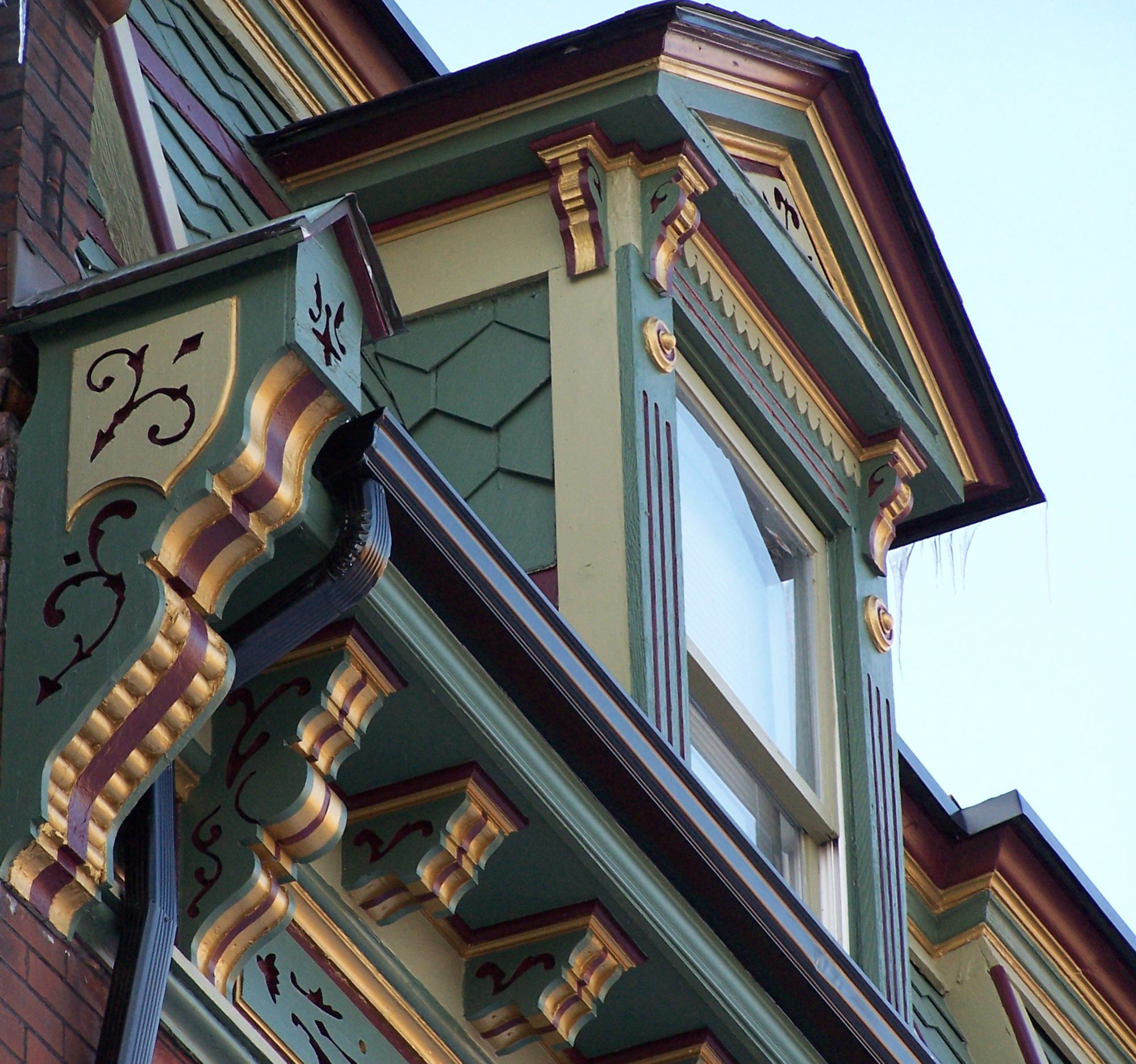(Click on image for larger image) Slate roofs
It seems like all a person needs to do is nail the slate on the roof in a pleasing pattern and call it a day!
The longevity is mostly in the preparation which can’t be seen once the job is done.
The first step is to make sure the roof deck has no areas of rotten wood once the old roof has been removed. The next simple step determines if the roof will last leak free for a few years, 40 to 60 years, or until the entire life of the material. This is the application of the waterproof membrane. Lately there have been many new synthetic plastic membranes with great claims of permanence. The only problem is that, if testing was done with them, it was accelerated age testing and not the true test of time because none of them have been around for 100 years yet! No one knows how long these new products will really last.
There is one known waterproof under-layment that has lasted this long and that is ASTM D-266 specified 30 pound or 45 pound asphalt saturated felt. A slate roof, properly installed, does not really need felt underneath it. However, the use of felt can compensate for mistakes in proper installation of the slate such that the roof may leak in as few a 5 years or as many as 40 to 60 years. If the nailing pattern, overlap, side spacing, and under eve construction are properly executed the roof will remain water proof well beyond the time the felt deteriorates.
This small but important step determines how often you will have a slate fallen out for no apparent reason: Each time, right before we are about to hang (nail) the slate on the roof, the slate is held by the edge and we use the slate hammer to strike it. There should be a clear bell type ring to it. If there is a buzz or dull thud sound, the slate has a defect in it and will later break during freeze thaw cycle, roof traffic or thermal expansion.
Yet another but important detail is how the slate is nailed to the wood roof decking. Each slate needs to be properly “hung”. If it is nailed too tight it will rock backward on the previously installed slate below it and the front edge will tilted up so there will be space under the front edge. This will not look very uniform on the roof but if someone gets on the roof for maintenance roof or thermal expansion, the slate will break.
Of course, copper slater’s nails must be used. Galvanized nails will rust after some years and fail.The slate must have only very few that are 1/4 inch in average thickness. When we place an order with the slate quarry, I specify thicker ones as you can see in this close up. The increase in cost is not significant but the roof looks much more substantial.
This is very important but is not often discussed because it can add hidden profit for the contractor. In St. Louis the slate roofs have been installed with a two inch head lap almost with out regard for the pitch. So the typical roof contractor will use the same when a three inch headlap should be used. This saves the contractor as much as 10 to 15% on materials for the job. This can easily be in the $3,000 to $5,000 range. Since there is felt under the roof, even the poorest quality felt will last long enough for the owner to forget who installed the slate roof before mysterious leaks appear in unusual places years later!
Central Contracting takes the time to install this extraordinarily beautiful roof for maximum life and charm.
We repair these roof using concealed copper nails and copper bibs to keep sliding snow and ice from pulling them back out. Tile leaks usually require the felt to be replaced and lapped properly with the existing felts. For over 35 years we have been stopping leaks on slate and tile roofs.
Drop us an email by clicking on Contact Us at the bottom.




